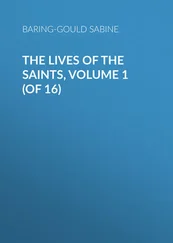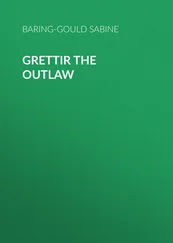Sabine Baring-Gould - A Book of The Riviera
Здесь есть возможность читать онлайн «Sabine Baring-Gould - A Book of The Riviera» — ознакомительный отрывок электронной книги совершенно бесплатно, а после прочтения отрывка купить полную версию. В некоторых случаях можно слушать аудио, скачать через торрент в формате fb2 и присутствует краткое содержание. Жанр: foreign_antique, foreign_prose, на английском языке. Описание произведения, (предисловие) а так же отзывы посетителей доступны на портале библиотеки ЛибКат.
- Название:A Book of The Riviera
- Автор:
- Жанр:
- Год:неизвестен
- ISBN:нет данных
- Рейтинг книги:5 / 5. Голосов: 1
-
Избранное:Добавить в избранное
- Отзывы:
-
Ваша оценка:
- 100
- 1
- 2
- 3
- 4
- 5
A Book of The Riviera: краткое содержание, описание и аннотация
Предлагаем к чтению аннотацию, описание, краткое содержание или предисловие (зависит от того, что написал сам автор книги «A Book of The Riviera»). Если вы не нашли необходимую информацию о книге — напишите в комментариях, мы постараемся отыскать её.
A Book of The Riviera — читать онлайн ознакомительный отрывок
Ниже представлен текст книги, разбитый по страницам. Система сохранения места последней прочитанной страницы, позволяет с удобством читать онлайн бесплатно книгу «A Book of The Riviera», без необходимости каждый раз заново искать на чём Вы остановились. Поставьте закладку, и сможете в любой момент перейти на страницу, на которой закончили чтение.
Интервал:
Закладка:
This leads to the mention of what is of no small interest in the history of the origin of part-singing. Anyone familiar with vespers, as performed in French churches, is aware that psalms and canticles are sung in one or other fashion: either alternate verses alone are chanted, and the gap is filled in by the organ going through astounding musical frolics; or else one verse is chanted in plain-song, and the next in fauxbourdon – that is to say, the tenor holds on to the plain-song, whilst treble and alto gambol at a higher strain a melody different, but harmonious with the plain-song. In Provence at high mass the Gloria and Credo are divided into paragraphs, and in like manner are sung alternately in plain-song and fauxbourdon . The origin of this part-singing is very curious. The congregation, loving to hear their own voices, and not particularly interested in, or knowing the Latin words, broke out into folk-song at intervals, in the same “mode” as that of the tone sung by the clergy. They chirped out some love ballad or dance tune, whilst the officiants in the choir droned the Latin of the liturgy. Even so late as 1645, the Provençals at Christmas were wont to sing in the Magnificat a vulgar song —
“Que ne vous requinquez-vous, Vielle,
Que ne vous requinquez, donc?”
which may be rendered —
“Why do you trick yourself out, old woman?
O why do you trick yourself so?”
In order to stop this sort of thing the clergy had recourse to “farcing” the canticles, i. e. translating each verse into the vernacular, and interlarding the Latin with the translation, in hopes that the people, if sing they would, would adopt these words; but the farced canticles were not to the popular taste, and they continued to roar out lustily their folk-songs, often indelicate, always unsuitable. This came to such a pass that either the organ was introduced to bellow the people down, or else the system was accepted and regulated; and to this is due the fauxbourdon . But in Italy and in the South of France it passed for a while beyond regulation. The musicians accepted it, and actually composed masses, in which the tenor alone sang the sacred words and the other parts performed folk-songs.
As Mr. Addington Symonds says: —
“The singers were allowed innumerable licences. Whilst the tenor sustained the Gregorian melody, the other voices indulged in extempore descant, regardless of the style of the main composition, violating time, and setting even the fundamental tone at defiance. The composers, to advance another step in the analysis of this strange medley, took particular delight in combining different sets of words, melodies of widely diverse character, antagonistic rhythms, and divergent systems of accentuation, in a single piece. They assigned these several ingredients to several parts, and for the further exhibition of their perverse skill, went even to the length of coupling themes in the major and the minor. The most obvious result of such practice was that it became impossible to understand what was being sung, and that instead of concord and order in the choir, a confused discord and anarchy of dinning sounds prevailed. What made the matter, from an ecclesiastical point of view, still worse, was that these scholastically artificial compositions were frequently based on trivial and vulgar tunes, suggesting the tavern, the dancing-room, or even worse places, to worshippers assembled for the celebration of a Sacrament. Masses bore titles adopted from the popular airs on which they were founded; such, for example, as Adieu, mes amours , À l’ombre d’un buissonnet , Baise moi , Le vilain jaloux . Even the words of love ditties and obscene ballads were being squalled out by the tenor (treble?) while the bass (tenor?) gave utterance to an Agnus Dei or a Benedictus , and the soprano (alto?) was engaged upon the verses of a Latin hymn. Baini, who examined hundreds of the masses and motetts in MS., says that the words imported into them from vulgar sources ‘make one’s flesh creep, and one’s hair stand on end.’ He does not venture to do more than indicate a few of the more decent of these interloping verses. As an augmentation of this indecency, numbers from a mass which started with the grave rhythm of a Gregorian tone were brought to their conclusion on the dance measure of a popular ballata , so that Incarnatus est or Kyrie eleison went jigging off into suggestions of Masetto and Zerlina at a village ball.” 3 3 Renaissance in Italy : “The Catholic Revival,” ii. c. 12.
The musicians who composed these masses simply accepted what was customary, and all they did was to endeavour to reduce the hideous discords to harmony. But it was this superposing of folk-songs on Gregorian tones that gave the start to polyphonic singing. The state of confusion into which ecclesiastical music had fallen by this means rendered it necessary that a reformation should be undertaken, and the Council of Trent (Sept. 17, 1562) enjoined on the Ordinaries to “exclude from churches all such music as, whether through the organ or the singing, introduces anything impure or lascivious, in order that the house of God may truly be seen to answer to its name, A House of Prayer.” Indeed, all concerted and part music was like to have been wholly banished from the service of the church, had not Palestrina saved it by the composition of the “Mass of Pope Marcellus.”
A visitor to Provence will look almost in vain for churches in the Gothic style. A good many were built after Lombard models. There remained too many relics of Roman structures for the Provençals to take kindly to the pointed arch. The sun had not to be invited to pour into the naves, but was excluded as much as might be, consequently the richly traceried windows of northern France find no place here. The only purely Gothic church of any size is that of S. Maximin in Var. That having been a conventual church, imported its architects from the north.
One curious and indeed unique feature is found in the Provençal cathedral churches: the choir for the bishop and chapter is at the west end, in the gallery, over the narthex or porch. This was so at Grasse; it remains intact at Vence.
CHAPTER II
LE GAI SABER
WHAT the language of the Ligurians was we do not know. Among them came the Phœnicians, then the Greeks, next the Romans. The Roman soldiery and slaves and commercials did not talk the stilted Latin of Cicero, but a simple vernacular. Next came the Visigoths and the Saracens. What a jumble of peoples and tongues! And out of these tongues fused together the Langue d’oc was evolved.
It is remarkable how readily some subjugated peoples acquire the language of their conquerors. The Gauls came to speak Latin. The Welsh – the bulk of the population was not British at all; dark-haired and dark-eyed, they were conquered by the Cymri and adopted their tongue. So in Provence, although there is a strong strain of Ligurian blood, the Ligurian tongue is gone past recall. The prevailing language is Romance; that is to say, the vernacular Latin. Verna means a slave; it was the gabble of the lower classes, mainly a bastard Latin, but holding in suspense drift words from Greek and Gaulish and Saracen. In substance it was the vulgar talk of the Latins. Of this we have curious evidence in 813. In his old age Charlemagne concerned himself much with Church matters, and he convoked five Councils in five quarters of his empire to regulate Church matters. These Councils met in Mainz, Rheims, Châlons, Tours, and Arles. It was expressly laid down in all of these, save only in that of Arles, that the clergy should catechise and preach in the vulgar tongue; where there were Franks, in German; where there were Gauls, in the Romance. But no such rule was laid down in the Council of Arles, for the very reason that Latin was still the common language of the people, the simple Latin of the gospels, such as was perfectly understood by the people when addressed in it.
Читать дальшеИнтервал:
Закладка:
Похожие книги на «A Book of The Riviera»
Представляем Вашему вниманию похожие книги на «A Book of The Riviera» списком для выбора. Мы отобрали схожую по названию и смыслу литературу в надежде предоставить читателям больше вариантов отыскать новые, интересные, ещё непрочитанные произведения.
Обсуждение, отзывы о книге «A Book of The Riviera» и просто собственные мнения читателей. Оставьте ваши комментарии, напишите, что Вы думаете о произведении, его смысле или главных героях. Укажите что конкретно понравилось, а что нет, и почему Вы так считаете.












